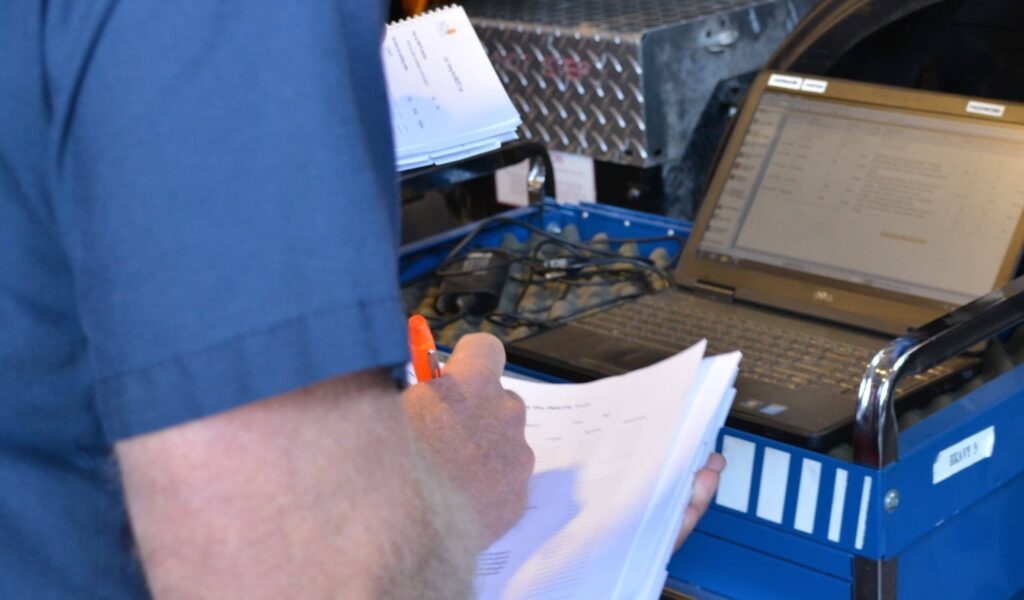The biggest difference drivers report when they swap from diesel-powered vehicles to those that operate on natural gas is that they appear to be running on low power. Many times, the reason this happens with newer Cummins NG engines is simply because these drivers have to get used to a new fuel delivery system. We’ve highlighted before how the Cummins 12N natural gas engine has roughly the same horsepower and torque as a 12-liter diesel, but its handling — and by extension, power level — feels like it’s less. That said, there are times when low power is a legitimate concern that will need to be addressed by your CNG-trained technicians. Here are the three main factors they’ll need to keep in mind when diagnosing your engines.
CNG engines are complex. It’s this complexity, coupled with components that do and don’t send fault codes, that can initially make diagnostics a little tricky. For instance, Cummins natural gas engines have two controllers — an electronic control module (ECM) and an ignition control model (ICM) — while those running on diesel only use the former. And, of roughly 10 actuators found on Cummins engines, seven (7) of them generally send fault codes, while the other three (3) don’t. Some of these codes are also generalized in nature, requiring your technicians to assess several potential sources for the fault.
Remember the “Big Five.” I’m referring to turbochargers and charge air, ignition, fuel, and mechanical systems. Turbocharger sensor failures are usually easy to identify for boost pressure, turbine temperature, and intake humidity/pressure, while components like wastegates and boost lines require a more in-depth analysis. In addition, technicians should not assume that the piping and piping connections after the turbocharger or charged air cooler are operational or in suitable repair. These components can be the root cause for poor drivability due to loss of charged air that normally enters the intake manifold for a proper fuel, air, and EGR mixture. Ignition coils, coil extensions, and spark plugs in the ignition system can potentially misfire. The fuel system can have trouble from its primary or secondary regulators, or from clogs that form in its coalescing filters, flow screens, and mixers, or from oil contamination that carries over from a CNG fueling station. And we highly recommend keeping up your valve lash maintenance when it comes to avoiding a mechanical issue.
Use the best diagnostics tools available. Cummins INSITE and QSOL software are hands down the go-to diagnostics tools your team needs for identifying and troubleshooting potential low power in your Cummins natural gas engines. The only problem? We hear from a lot of technicians who admit they haven’t been trained on how to leverage these tools properly, which decreases their efficiency and effectiveness, and puts the whole fleet at unnecessary risk.
That’s why we want to help. NGVi offers Heavy-Duty Maintenance and Diagnostics Training and Cummins INSITE and QSOL Software Training that will enable your technicians to accurately and efficiently diagnose the condition of your natural gas engines, confirm when low power is indeed a problem (or chalked up to “new” drivers), and keep your fleet (or your customer’s fleet) up and running. If you have questions about the courses we currently have available, let’s schedule some time to talk about them.

